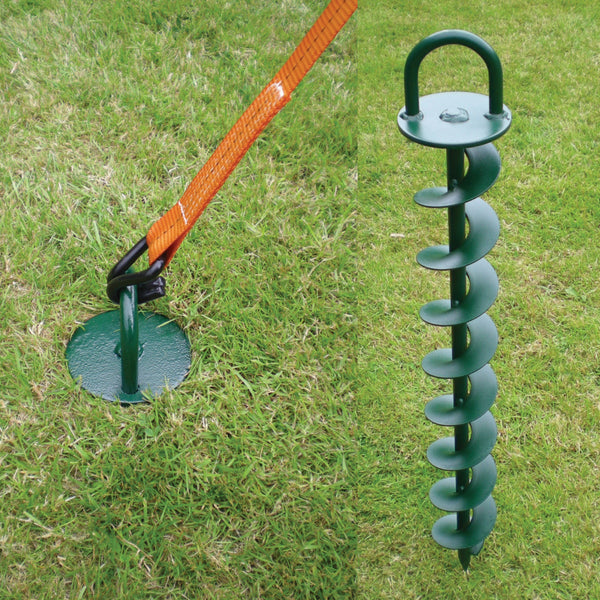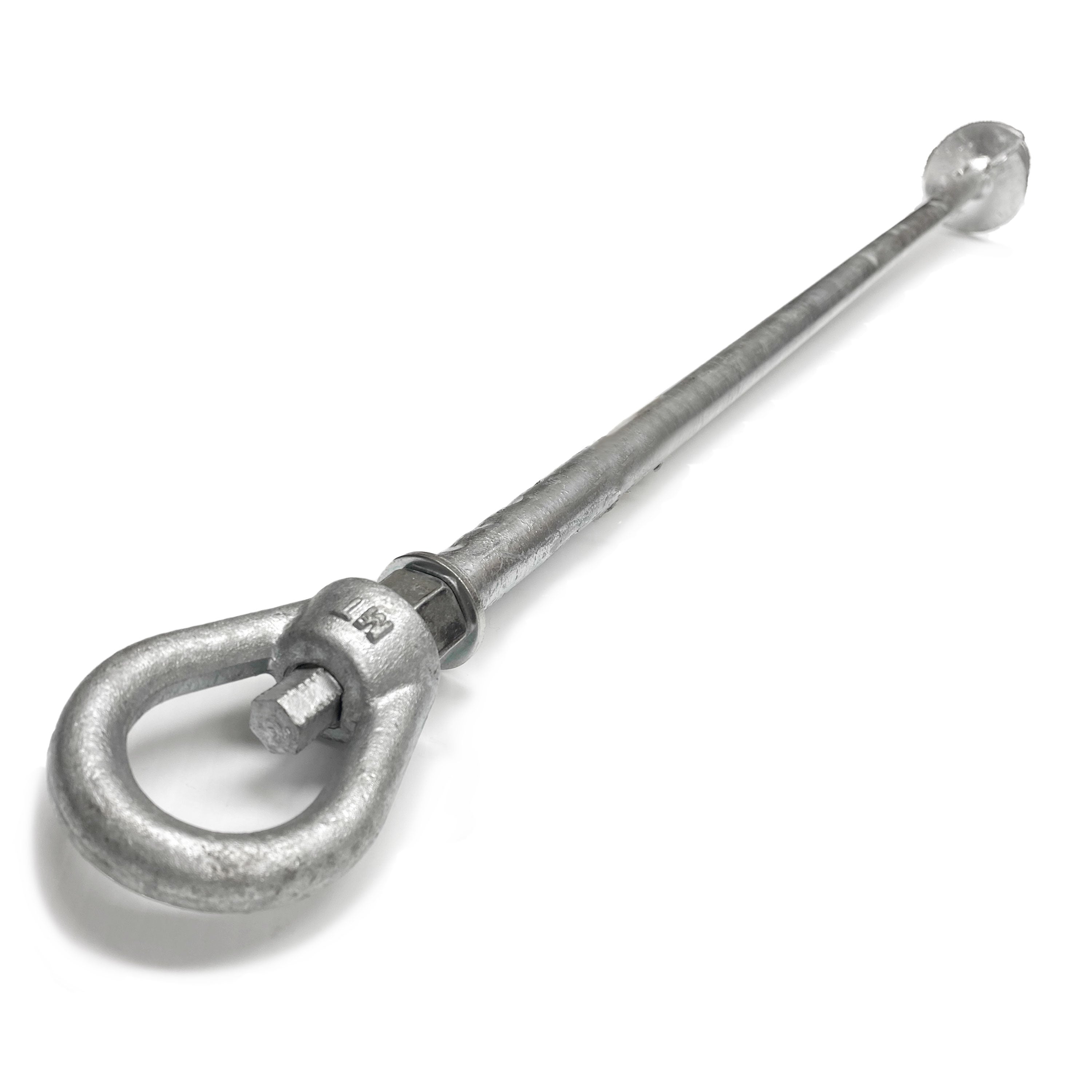Explore the Different Kinds of Ground Anchor for Your Following Project
From auger supports, which excel in varied soil conditions, to risk anchors created for temporary installments, the options are numerous. In addition, concrete and screw supports present one-of-a-kind benefits in certain circumstances, while deadman anchors are tailored for applications needing resistance to lateral forces.

Auger Anchors
Auger supports are a preferred choice in different building and construction and landscape design jobs as a result of their special layout and effective anchoring capacities. These anchors contain a helical screw-like shaft that is driven right into the ground, permitting a stable and protected hold. The spiral style helps with easy setup and makes the most of resistance versus lateral pressures, making auger supports particularly reliable in applications such as secure fencing, momentary frameworks, and disintegration control.
The installment process of auger supports is relatively straightforward. They can be manually or mechanically mounted, depending on the size and called for deepness. This adaptability permits their use in diverse soil conditions, from sandy to clayey surfaces. Auger anchors can be quickly gotten rid of and recycled, which adds to their cost-effectiveness and sustainability.
Among the considerable advantages of auger anchors is their capacity to distribute loads equally across the surrounding dirt, lowering the risk of soil disruption and reducing ecological influence. Additionally, they are less susceptible to heaving or loosening up with time compared to traditional securing techniques. Auger anchors are an excellent option for jobs requiring sturdy and dependable anchoring services.

Risk Anchors
When it involves safeguarding structures in a variety of outside applications, risk anchors provide a trusted and simple remedy. These supports are generally constructed from resilient materials such as steel or light weight aluminum, developed to endure environmental stress and anxieties while offering optimal security. Their simple layout permits fast installment, making them a perfect selection for temporary or long-term anchoring demands.
Stake anchors are particularly valuable in securing outdoors tents, canopies, and other lightweight frameworks against wind and weather. They operate by being driven into the ground at an angle, creating a solid hold that resists pull-out pressures - Ground Anchor. The efficiency of stake anchors depends on several variables, consisting of soil kind, moisture web content, and the angle of setup
For included safety, numerous risk anchors include attachment factors for bands or ropes, enabling for tension modifications as essential. In applications such as landscaping or building and construction, they can properly support tools or structures on irregular terrain. In general, risk supports offer a flexible and affordable remedy for safeguarding various outside installments, making them a preferred selection for contractors and do it yourself lovers alike.
Concrete Anchors
Concrete supports give a durable option for securing frameworks to concrete surfaces, guaranteeing stability and safety and security in various applications. These anchors are essential for jobs varying from household building and constructions to massive industrial installations. They are available in various types, including expansion anchors, glue supports, and undercut anchors, each made for specific load demands and ecological problems.
Growth anchors rely upon mechanical systems to grasp the concrete when mounted. They are find more perfect for medium to durable applications. Sticky anchors use high-strength epoxy or resin to bond the anchor to the concrete, supplying remarkable load-bearing capacities, particularly in split concrete situations. Undercut supports create a special form within the concrete, giving exceptional holding power, specifically in applications where tensile loads are common.
Picking the ideal concrete support includes taking into consideration factors such as the weight of the load, the condition of the concrete, and ecological conditions. Appropriate installment strategies are essential to make certain ideal performance and integrity. When carried out correctly, concrete anchors significantly improve the structural stability of various projects, making them indispensable in modern building and construction practices. Comprehending the specific demands of your job will aid in choosing the right kind of concrete support for the task.
Screw Anchors

Screw supports are a functional securing option that can be effectively used in a range of applications where typical concrete anchors may not be enough. These anchors contain a helical layout that permits them to be easily driven into the ground, making them ideal for usage in dirt and various other substratums. Their unique structure supplies exceptional holding power and resistance to pull-out forces, making them suitable for countless jobs, from landscape design to structural support.
One of the main benefits of screw supports is their convenience of setup. They call for very little equipment and can commonly be set up without the requirement for excavation, which saves both time and labor expenses. In addition, screw supports can be gotten rid of and reused, using a sustainable solution for short-term applications.
Screw anchors are specifically useful in locations where soil problems are testing, such as loosened or sandy dirts. Their capacity to be installed at differing depths enables for personalization based upon specific project needs. On the whole, screw supports offer a dependable and effective securing approach, making them an excellent option for contractors and engineers seeking efficient remedies for their tasks.
Deadman Anchors
Deadman supports serve as a robust option for stabilizing structures in tough problems, particularly where traditional securing techniques may fail. These anchors contain large, hefty items hidden underground, which create resistance against side forces. The layout normally involves a straight part, such as a block of concrete or a steel plate, hidden in the soil, to which bands or wires are connected.
The effectiveness of deadman supports lies in their capacity to disperse lots over a bigger area, lowering the Homepage danger of failure in unstable soil conditions. They are specifically valuable in applications such as keeping walls, temporary structures, and slope stablizing, where soil movement can jeopardize the her explanation stability of the framework.
Setup of deadman anchors needs cautious preparation to ensure they are placed at the proper depth and alignment, optimizing their load-bearing capability. While they might require more labor and material than lightweight supports, their integrity in damaging problems makes them very useful for long-term jobs. Moreover, deadman supports are functional and can be adapted to different applications, making them a best selection for designers encountering special challenges in their tasks.
Conclusion
In summary, picking the proper kind of ground support is crucial for making sure stability and safety and security in different jobs. Auger supports master varied soil problems, while risk supports match temporary applications. For concrete surface areas, expansion and glue anchors offer reputable options, and screw anchors provide flexibility in challenging terrains. Deadman supports are specifically efficient in standing up to lateral pressures for keeping walls. Mindful factor to consider of these options will certainly improve job results and architectural integrity.
Additionally, concrete and screw supports present distinct advantages in certain situations, while deadman anchors are tailored for applications calling for resistance to lateral forces - Ground Anchor.Auger anchors are a prominent selection in numerous construction and landscaping tasks due to their special style and efficient anchoring capabilities. They come in various kinds, including expansion anchors, adhesive supports, and undercut supports, each made for details lots demands and ecological conditions
Adhesive supports make use of high-strength epoxy or material to bond the anchor to the concrete, supplying exceptional load-bearing abilities, especially in split concrete situations. Overall, screw anchors offer a effective and reliable securing technique, making them an outstanding option for contractors and designers seeking reliable solutions for their jobs.